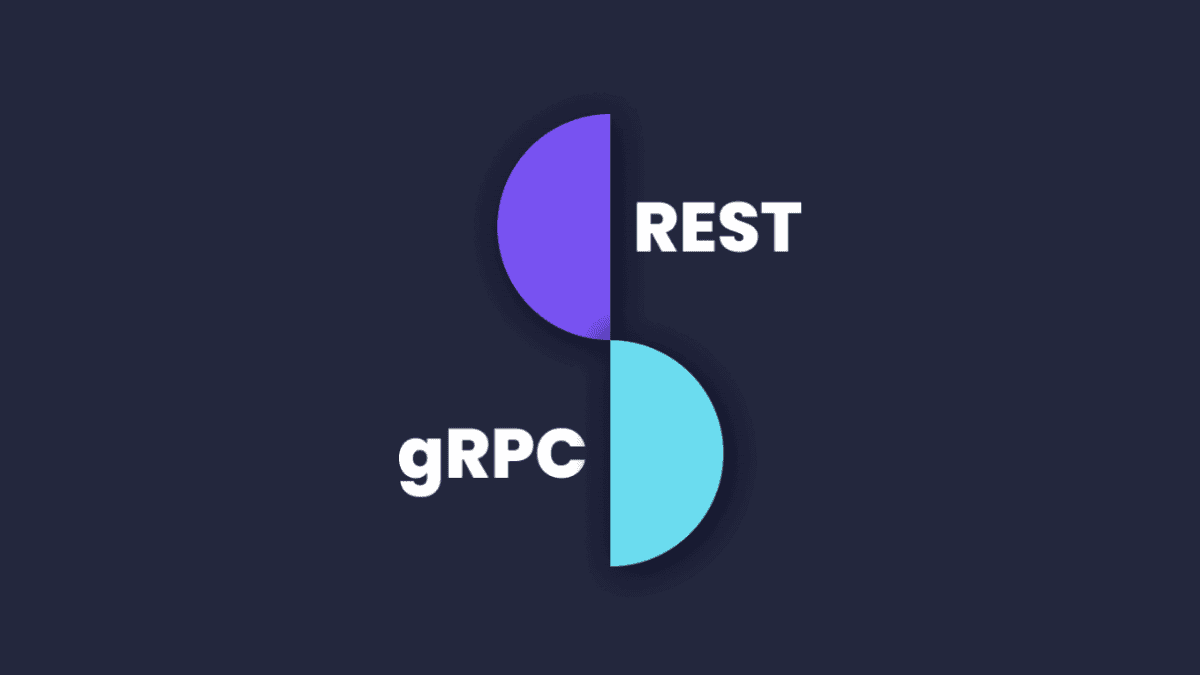Microservices are a software architecture style that structures an application as a collection of loosely coupled services. Each service is designed to perform a specific function and can be developed, deployed, and scaled independently. This approach allows organizations to enhance their agility and flexibility in software development and deployment, while also making it easier to prevent cyber attacks by isolating potential vulnerabilities within individual services.
With microservices, teams can work on different services simultaneously, reducing the overall time to market for new features. Each microservice can be built using different programming languages or technologies, tailored to fit specific requirements. This architecture emphasizes modularity, allowing for easier maintenance and updates.
Importance of Communication Protocols in Microservices
Communication protocols are vital in microservices architecture as they facilitate interaction between the independent services. Effective communication ensures that services can exchange data seamlessly, which is crucial for the functionality of the overall application.
The choice of communication protocol affects performance, scalability, and ease of use. REST (Representational State Transfer) and gRPC (Google Remote Procedure Call) are two popular protocols used in microservices communication. Understanding their strengths and limitations is crucial for making informed decisions about microservices architecture.
Selecting the right communication protocol can significantly influence how efficiently microservices perform, affect response times, and dictate the architectural decisions of IT strategies within organizations.
REST in Microservices
To better understand how REST supports microservices, let’s look at several practical scenarios where this architecture proves especially effective.
Overview of REST
REST, or Representational State Transfer, is a commonly used architecture for building web-based applications and services. REST relies on a stateless, client-server communication model, which allows for the separation of client and server concerns. This model is built on standard HTTP methods, including GET, POST, PUT, DELETE, and PATCH, to perform operations on resources identified by URLs.
Key characteristics of REST include:
- Statelessness: Each request from a client contains all the information needed to fulfill that request. The server does not store any client context.
- Resource-Based: REST uses named resources identified by URLs, with standard representations such as JSON or XML.
- Uniform Interface: A consistent interface is provided to interact with the resources, simplifying the architecture.
Implementation and Use Cases in Microservices
Implementing REST in microservices involves defining APIs that adhere to REST principles, ensuring that each microservice can communicate effectively with others. REST APIs are widely adopted in many scenarios due to their simplicity and ease of use.
Some common use cases for REST in microservices include:
| Use Case | Description |
| Data Retrieval | Fetching data from a server, such as user information or product details. |
| Resource Management | Creating, updating, or deleting resources, allowing full CRUD functionality. |
| Integration with Frontend | Serving as a backend for web applications where clients interact with data. |
| Microservice Communication | Enabling communication between different microservices in a distributed system. |
REST's ability to work seamlessly over the internet and integrate with various platforms makes it a favorable choice for SMEs seeking reliable IT support and services. With its stateless nature and simplicity, REST lends itself well to the microservices architecture, allowing for scalability and easier maintenance.
gRPC in Microservices
The following highlights how gRPC can be implemented in microservices and explores practical scenarios where its capabilities offer the most value.
Overview of gRPC
gRPC is a modern open-source framework designed for high-performance remote procedure calls (RPC) in microservices architectures. It uses HTTP/2 for transport, providing lightweight communication that enables efficient communication between distributed systems. gRPC employs Protocol Buffers as its interface definition language (IDL), allowing for precise data serialization and deserialization, which contributes to performance improvements.

Key features of gRPC include:
- Bi-directional streaming: Clients and servers can send and receive data simultaneously.
- Deadlines and cancellation: gRPC supports time-bound requests and the ability to cancel ongoing operations.
- Automatic code generation: Tools create the server and client code from service definitions, speeding up development.
Implementation and Use Cases in Microservices
Implementing gRPC in microservices involves defining service contracts using Protocol Buffers and utilizing the gRPC library to handle network communication. The infrastructure offers performance benefits suitable for certain use cases, especially those requiring fast and efficient network communication.
Here are some common scenarios where gRPC proves especially useful, thanks to its efficient communication model and strong support for real-time data exchange:
| Use Case | Description |
| Real-time streaming | Applications needing real-time data exchange, like chat applications or live dashboards. |
| Microservices communication | Services communicating within an architecture, particularly in high-volume data environments. |
| Mobile applications | Client-server interactions that require efficient serialization and reduced latency. |
gRPC is particularly advantageous in scenarios where performance and scalability are critical. The binary format of Protocol Buffers allows for smaller message sizes compared to traditional text-based formats like JSON used in REST. In high-throughput systems, gRPC can lead to significant improvements in speed and resource utilization.
Use cases include financial transaction systems, where latency is crucial, and large-scale data processing applications that benefit from efficient communication protocols. Implementing gRPC may require adjustments in existing systems, particularly when transitioning from RESTful services, but the potential gains in efficiency often justify the investment. For a broader strategy on how to safeguard these systems from unexpected outages, refer to our article, The Ultimate Cyber Disaster Recovery Checklist to Protect Your Business.
Performance and Scalability Comparison
Evaluating communication protocols for microservices requires careful attention to performance and scalability. REST and gRPC each have unique characteristics that affect how well they perform and scale in various applications.
Performance Metrics: REST vs gRPC
The performance of REST and gRPC can be analyzed through several key metrics, including latency, throughput, and data serialization efficiency.
| Metric | REST | gRPC |
| Latency | Higher latency due to HTTP overhead and text-based JSON serialization | Lower latency, utilizes HTTP/2 and binary serialization (Protocol Buffers) |
| Throughput | Limited by text-based data format and stateless nature | High throughput with efficient streaming support and smaller payloads |
| Serialization | JSON is human-readable, but larger in size | Protocol Buffers offer compact binary format, reducing size and improving speed |
Scalability Comparison: REST vs gRPC
Scalability evaluates how well a system can handle increased loads. REST and gRPC exhibit different scalability characteristics.
| Aspect | REST | gRPC |
| Request-Response | Stateless and simpler to scale horizontally | Supports multiplexing in HTTP/2, allowing multiple streams over a single connection |
| Load Balancing | May need more complex strategies due to statelessness | Can efficiently utilize load balancing strategies with built-in support for service discovery |
| Microservices Interaction | Can become complex with multiple service interactions and calls | Designed for efficiency with lightweight communication, allows for easy service-to-service calls |
Comparing REST and gRPC on performance metrics and scalability, it becomes clear that each protocol has strengths and weaknesses that can significantly impact microservices architecture. SMEs should consider these factors carefully when selecting the appropriate protocol for their needs.
Design and Development Considerations
SMEs considering the implementation of microservices must carefully evaluate several factors when choosing between REST and gRPC. The following table outlines key aspects to consider:
| Criteria | REST | gRPC |
| Communication Style | Request/Response model | Bi-directional streaming |
| Data Format | JSON | Protocol Buffers (protobuf) |
| Performance | Slower with larger payloads | Faster with optimized byte size |
| Language Support | Broad support across languages | Primarily focuses on supported languages |
| Service Discovery | Requires additional setup | Built-in support with DNS |
| Error Handling | HTTP status codes | Custom error handling |
| Use Case Suitability | Ideal for CRUD applications | Well-suited for high-performance needs |
SMEs should assess their specific requirements, as these factors will influence their choice significantly.
Best Practices for Utilizing REST and gRPC in Microservices
To ensure optimal performance and maintainability when working with REST or gRPC in microservices environments, the following best practices are recommended:
REST Best Practices
- Use Meaningful Resource URIs: Craft clear and descriptive endpoint names that indicate the resources they represent.
- Implement Proper HTTP Methods: Use the correct HTTP methods (GET, POST, PUT, DELETE) to conform to RESTful principles.
- Support Versioning: Implement API versioning to manage changes without breaking existing clients.
- Standardize Error Responses: Provide a consistent format for error messages to aid debugging.
gRPC Best Practices
- Define Protobuf Schemas: Create robust Protocol Buffer schemas to define message structures clearly.
- Utilize Streaming Effectively: Take advantage of gRPC’s streaming capabilities for real-time data transfer when needed.
- Implement Client and Server Interceptors: Use interceptors for tasks such as logging and authentication to enforce consistency.
- Measure Performance Metrics: Continuously monitor performance metrics to identify and resolve bottlenecks.
Implementing these best practices, SMEs can effectively utilize REST and gRPC to enhance their microservices architecture, ensuring scalability and improved performance in their IT services.

Future-Ready IT Starts with LK Tech
As microservices continue to evolve, both REST and gRPC are expected to play significant roles. Organizations will need to evaluate their specific requirements and the contexts in which they deploy these protocols to optimize their architectures effectively. At LK Tech, we offer top-notch IT support tailored to your unique needs, helping businesses implement the right technologies with confidence and efficiency.
Companies looking for expert IT services in Cincinnati can rely on our team for strategic guidance and hands-on solutions. Let us help you streamline your systems—reach out to us today and discover how we can support your IT goals.


